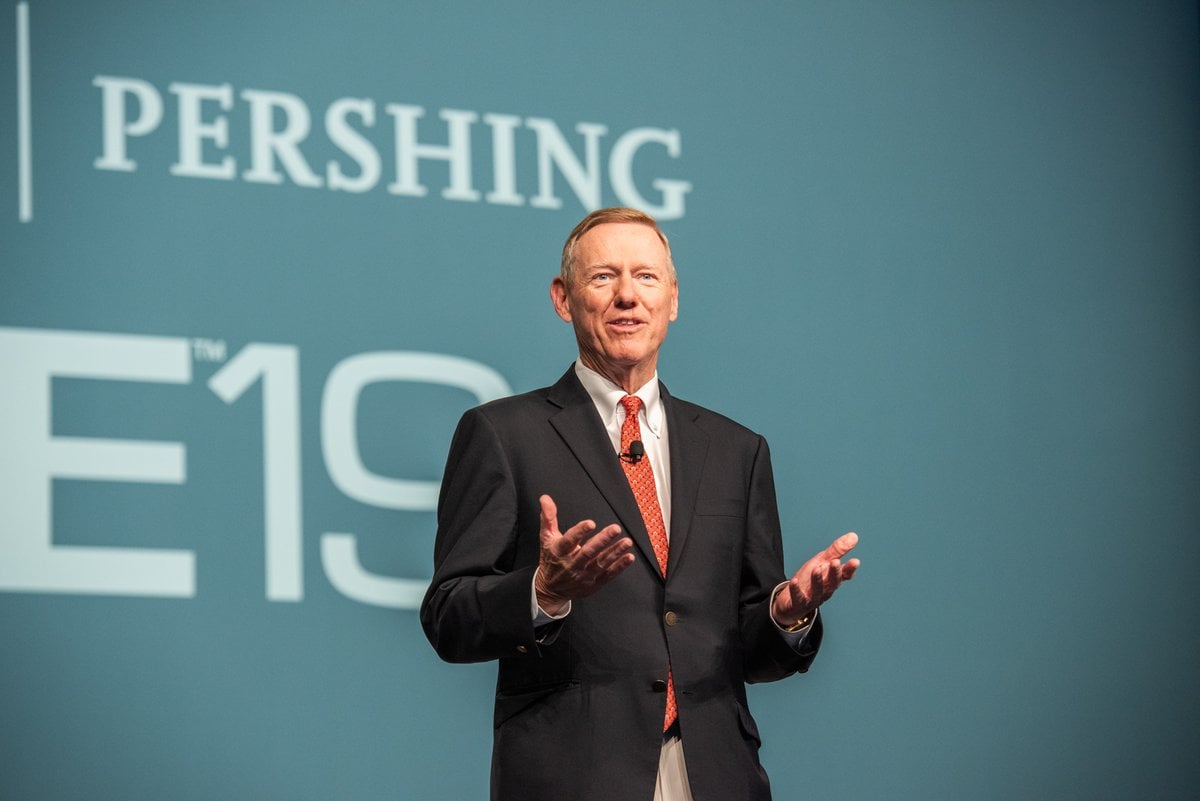 The Working Together process shared by Alan Mulally at Pershing Insite on June 12, 2019 (Photo: Janet Levaux/ALM)
The Working Together process shared by Alan Mulally at Pershing Insite on June 12, 2019 (Photo: Janet Levaux/ALM)
Alan Mulally, who led the turnaround at Ford from 2006 to 2014 after running Boeing’s commercial aircraft business, built much of his career success through the use of ex-Boeing CEO Phil Condit’s “Working Together” approach.
The engineer and executive shared how that framework can work for advisors and their practices on Wednesday during this week’s Pershing Insite meeting in Phoenix.
Some of Working Together’s key ingredients are integrity, honesty, respect and trust. Those who aren’t interested or able to follow its tenets, Mulally explained, are politely invited (and urged) to “move on to other opportunities.”
“It’s about trusting the process and having zero tolerance for violations,” he explained. “Enjoy the journey, but there’s no [joking or] humor at someone else’s expense. You go along to get along, or you don’t get [the insights from] sharing.”
“Early on in my career, I wanted to be a financial advisor, so this is my dream to be with you,” said the retired executive, who spent 38 years at Boeing. The beneficial approach of the Working Together process, he added, “are true for all size companies.”
One of Working Together’s key tenants is that “all people know how important they are [in the process] — suppliers, investors, employees, [customers] and beyond,” he said, noting that 70% of a plane’s value comes from suppliers.
Having a positive attitude — “or finding a way” no matter what — is also critical, Mulally said, explaining how Boeing and later Ford used color codes (green, yellow and red) to track the progress and challenges facing work processes.
Conquering Complexity
After Mulally was tapped to run Ford, he was asked what he knew about a business that has roughly 10,000 parts per unit and relies on sophisticated engineering.
“I said I worked on the 777, which has 4 million parts and stays in the air,” he joked. The Detroit News then ran a headline, “We think we got the right guy.”
Mulally saw cultural change as the only way to move forward for a company with a $17 billion net loss. “I worked to bring all leaders together and go through my plans,” he said.
This meant getting top managers comfortable with their projects being tracked for their problems — meaning being color coded yellow or red. “We had to say what was not going well,” Mulally told them. “And no one wanted to be the first to say something.”
That changed, thanks to Mark Fields — and later other execs — saying that they “would trust the process.”









 June 14, 2019 at 03:19 PM
June 14, 2019 at 03:19 PM











